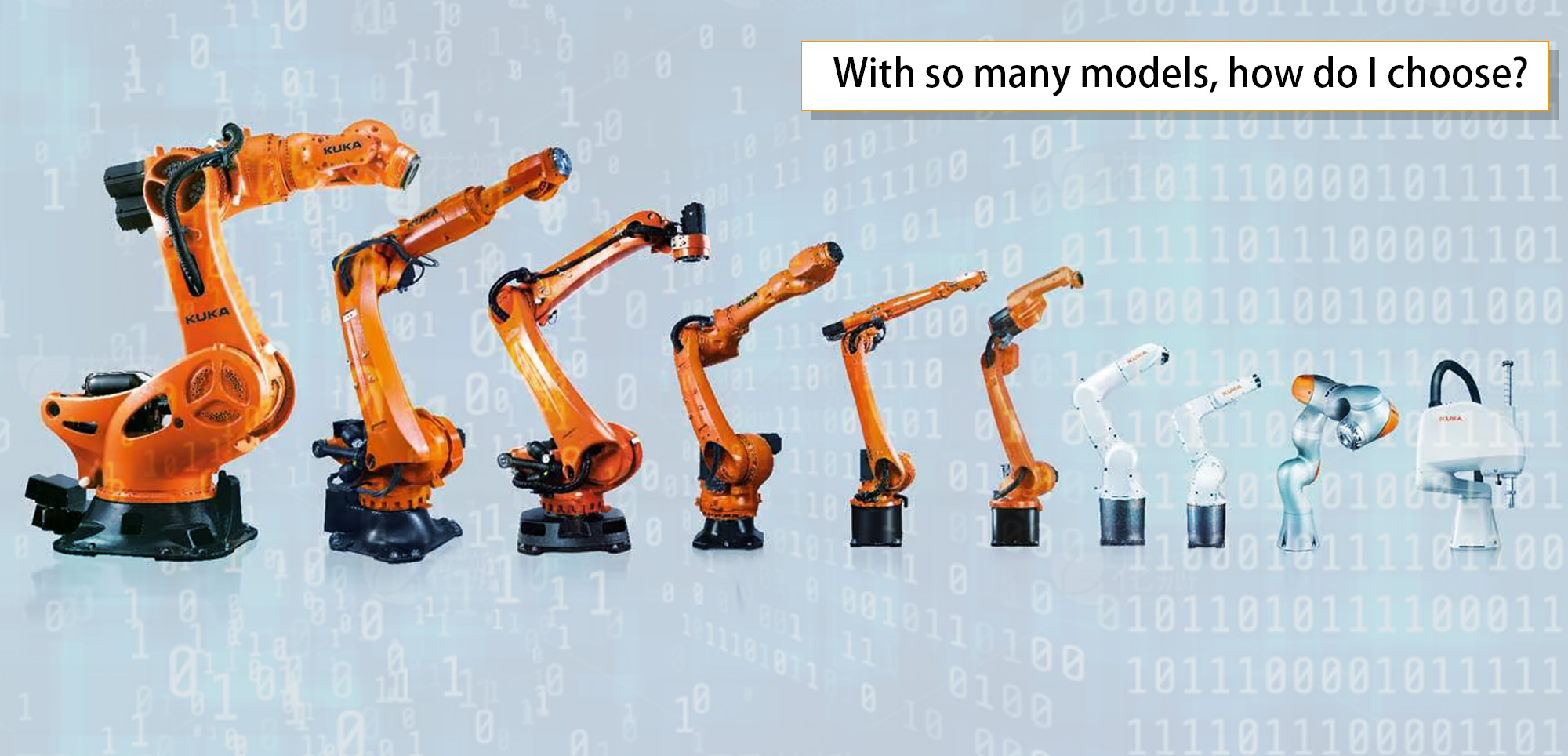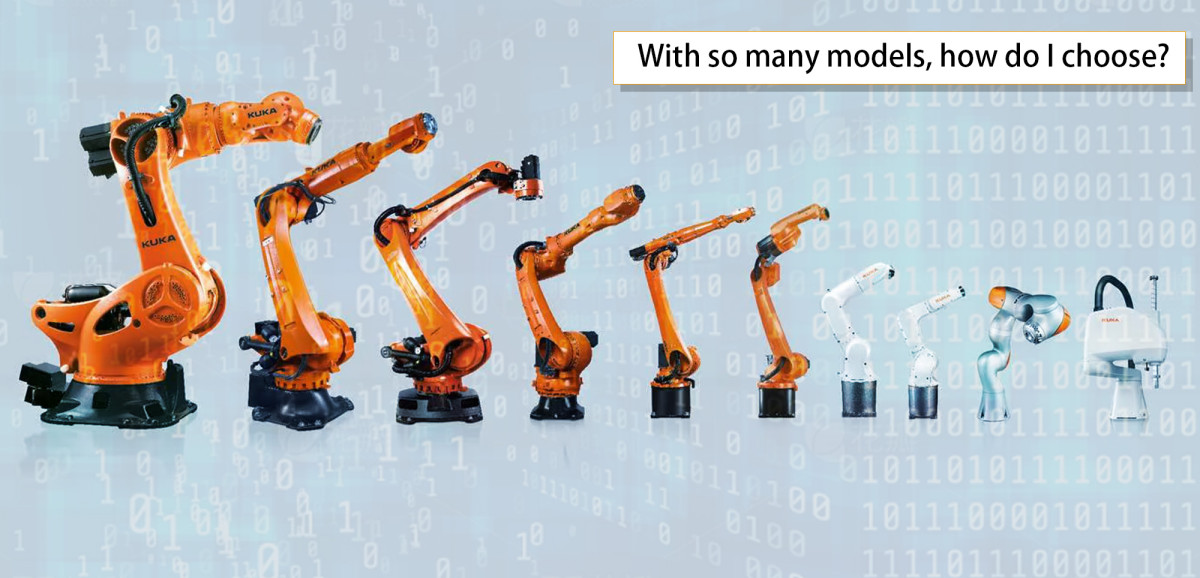
How to choose the right KUKA robot model?
In today's rapidly advancing world of automation and robotics, KUKA has established itself as a leading manufacturer of industrial robots. With a diverse range of KUKA robot models available, each tailored to specific applications and industries, choosing the right one can be a challenging task. How to choose the right KUKA robot model from a wide range of options available? In this article, we will explore the key considerations to help you make an informed decision when selecting the perfect KUKA robot model for your needs.
What is robotic arm?
A robotic arm is a type of mechanical arm, usually programmable, with similar functions to a human arm; the arm may be the sum total of the mechanism or may be part of a more complex robot. The links of such a manipulator are connected by joints allowing either rotational motion (such as in an articulated robot) or translational (linear) displacement.The links of the manipulator can be considered to form a kinematic chain. The terminus of the kinematic chain of the manipulator is called the end effector and it is analogous to the human hand. However, the term "robotic hand" as a synonym of the robotic arm is often proscribed.(From the Wikipedia)
Historical background of the KUKA robotic arm
KUKA (German: KUKA AG) is a German company engaged in the production of industrial robots and factory automation.
KUKA has 25 subsidiaries worldwide, including the United States, Mexico, Brazil, China, Taiwan, Japan, Korea, India, Russia and most European countries.
KUKA's fields of application
KUKA robots are generally used for material handling, processing, stacking, spot and arc welding in industries such as automation, metalworking, food and plastics.
Logistics industry: mainly in load bearing and free positioning.
Food industry: In this sector, KUKA robots take the burden off humans or machines in packaging, loading and unloading goods, food cutting, stacking and depalletizing, and quality control.
Construction industry: Applications in raw material transportation, processing and building processes.
Glass manufacturing: e.g. labware manufacturing, embryo making and deformation.
Foundry and forging industry: in deburring, grinding and drilling processes, as well as in quality control.
Wood industry: grinding, milling, drilling, sawing, sorting, palletizing and other processes can be done by robots.
Metal processing: The main areas of application are metal drilling, milling, cutting, bending and stamping. Of course, they are also used in welding, assembly, loading or unloading processes.
Stone processing: Used in slab bridge sawing, as well as in fully automated 3D processing
What are the KUKA models?

How to choose the right KUKA robot model from a wide range of options available?
Define Your Application Requirements
The first step in selecting the right KUKA robot model is to clearly define your application requirements. Determine the tasks the robot will be performing, the payload it needs to handle, the workspace dimensions, and the desired level of accuracy and repeatability. Understanding your specific application needs will narrow down the options and guide you towards a more suitable choice.
Evaluate Payload Capacity
Payload capacity is a critical factor in robot selection. KUKA offers a wide range of robots with varying payload capacities to cater to different industries. Ensure that the selected robot can handle the weight of the objects it needs to manipulate during the operation.
Consider Reach and Workspace
The workspace of the robot, also known as reach, defines the physical area within which the robot can operate. Assess the reach requirements of your application and choose a KUKA robot model with sufficient reach to access all required points in your workspace effectively.
Analyze Precision and Repeatability
The level of precision and repeatability required for your application will influence your choice of robot model. Industries like automotive and electronics manufacturing often demand high precision and tight tolerances, while other applications may have more relaxed requirements.
Evaluate Speed and Cycle Time
The speed and cycle time of the robot can impact overall productivity and efficiency. Depending on the application, you may need a robot that can perform tasks quickly, reducing production cycle times and increasing output.
Review Control Systems and Programming
KUKA robots are equipped with sophisticated control systems that vary between different models. Consider the ease of programming and the availability of advanced features like visual programming or simulation capabilities, especially if your team is not highly experienced in robot programming.
Assess Safety Features
Safety is of utmost importance in any industrial setting where humans and robots work together. Look for safety features such as collision detection, emergency stop functions, and safety sensors to ensure the well-being of your workforce and the longevity of the robot.
Consider Flexibility and Adaptability
The ability of the robot to adapt to changing production requirements and handle different tasks is vital, especially in dynamic manufacturing environments. Choose a KUKA robot model that offers flexibility and can be easily reprogrammed for various applications.
Account for Total Cost of Ownership (TCO)
When selecting a robot, consider not only the initial purchase cost but also the total cost of ownership over its lifespan. This includes maintenance, spare parts availability, and potential downtime in case of repairs.
Seek Expert Advice
If you find it challenging to navigate the wide array of KUKA robot models and their specifications, don't hesitate to seek advice from KUKA representatives or experienced robot integrators. They can provide valuable insights and assist you in making the best choice for your unique requirements.
If that's not enough to know, check out this article:How to choose a suitable industrial robot arm?
FAQ
1. How safe is the KUKA robotic arm?
Safety Design: KUKA robotic arms are designed with safety as a primary consideration. Their design adheres to international and national robot safety standards, such as the ISO 10218 series, to ensure the safety of the robot during normal operations. Safety design encompasses structural integrity, emergency stop devices, safety barriers, and sensors, among others.
Safety Sensors: KUKA robotic arms are typically equipped with various safety sensors, such as laser scanners, vision systems, and force sensors. These sensors monitor the robot's surroundings and take appropriate actions, such as emergency stops or trajectory adjustments, when detecting any anomalies or obstacles to ensure the safety of operators and the surrounding environment.
Emergency Stop Functionality:KUKA robotic arms feature emergency stop buttons, allowing operators to immediately halt the robot's motion in the event of any hazardous situations, preventing accidents.
Functional Safety: Functional safety is another critical aspect of KUKA robotic arms. KUKA may adopt functional safety standards, such as ISO 13849, to ensure that the robot's control system provides suitable responses and protective measures against potential risks.
User Training: KUKA typically provides training and education to ensure that operators are well-informed about proper usage and safety procedures. This helps reduce accidents and operational errors.
Safety Documentation: KUKA offers comprehensive safety manuals and user guides containing information and guidelines for safe robot operation. Operators are required to thoroughly read and follow the stipulations outlined in these documents.
2. How to maintain a KUKA robotic arm?
Regular Cleaning:
Regularly cleaning the robotic arm is crucial to keep it running smoothly. Ensure that the surface and critical components of the robot are free from dust, oil, or other debris. Use appropriate cleaning agents and tools, but avoid direct water spraying into the internal or sensitive parts of the robot.
Lubrication: Proper lubrication is essential to reduce friction and wear. Follow the guidance provided in KUKA's maintenance manual to inspect and replace lubricants regularly. Use the correct type and amount of lubricant, and avoid over-lubrication.
Sensor Inspection: KUKA robotic arms are typically equipped with various sensors for safety monitoring and position feedback. Regularly inspect the sensors to ensure their proper functioning and accuracy. Clean the sensor surfaces to maintain their sensitivity.
Joint and Connection Check: Periodically inspect the robotic arm's joints and connection components to ensure they are properly tightened and free from looseness or damage. Tighten or replace worn-out parts as needed.
Program Backup: Regularly back up the programs and settings running on the robotic arm. This will allow easy restoration of the robot's settings and operating procedures in case of issues or controller replacement.
System Updates and Upgrades:
Keep the KUKA robotic arm's system up to date with the latest performance and safety fixes.
Operator Training:
Ensure that the robotic arm's operators receive proper training on the correct usage and operating procedures. Qualified operators can reduce the risk of operational errors and accidents.
Regular Maintenance and Servicing: Schedule regular maintenance and contact KUKA's maintenance service team for inspections and servicing. They can provide advice and professional services based on the robot's usage and operating time.
UnionRobot Tech is a professional supplier of robotic arm integration, with a wealth of experience in robotic arm integration, if you do not understand the choice and use of robotic arm, welcome to consult us, we have professional sales engineers to dock and provide one-on-one service.
Finally, we hope that everyone who uses robotic arm can create great wealth for themselves.
PRODUCTS
About us
